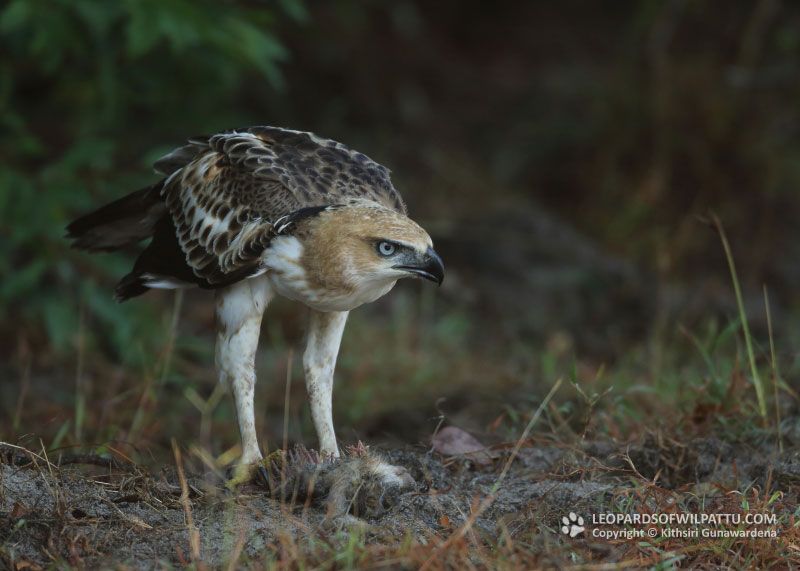
Birds ‹‹ Go Back
This is a common breeding resident found throughout the lowlands and ascends the hills up to about 1500 meters. Other than in Sri Lanka this eagle is found in India and from the southeast rim of the Himalaya across Southeast Asia to Indonesia and Philippines. Two sub species are recognized of this eagle S.c.cirrhatus, the nominate race in India and S. c. ceylanensis, which is smaller with a longer crest in Sri Lanka and also possibly in Travancore.
The conservation status of the species under reference is regarded as Least Concerned (National Red List 2012).
Crested Hawk-Eagle is a species protected under the Fauna and Flora Protection Ordinance as amended by Act No. 22 of 2009.
This species is quite common in all the dry zone National parks. I have also found it in most of the wet and intermediate zone forests and plantations. In the north I have observed this species in the Jaffna peninsula, Mannar Island, Kilinochchi and Mulathivu. It is common in the Knuckles Forest Reserve and the Rakwana hills. It is occasionally found at Talangama wet lands just outside the city of Colombo but can be regularly seen at Padukka, Labugama, Bodinagala and Meethirigala forest reserves. This, in my view, is the most fearless of all our eagles. In Udawalawa National Park I once observed one of these eagles attacking a grown Peahen and in June 1999 observe one of them feeding on the remains of a Black-naped Hare. In November 2001 I observed a pair of these raptors building a nest at Dolukanda and had observed nests with adult birding sitting or with chicks at different localities from January to August. My records indicate that these birds begin nest building towards the end or the beginning of the year resulting in most young eagles leaving the nests between June to August.
In November 2002 around 4.30pm I observed an exceptional sight which also included two of these eagles at Haragama. I was driving down from Kandy and observed hundreds of birds circling a spot by the side of the road. Having stopped the vehicle I observed a termite hill covered with hundreds of thousands of winged termites. The two Hawk Eagles and the Brahminy Kites ceased the insects with their feet and swallows them on the wing. They were accompanies by many other species of birds including a Common Kestrel, Ceylon Swallows, House Swifts, Jungle Crows, Common Mynahs ect. I observed the continuous flow of these insects and the feeding frenzy that was going on regardless of my being few feet away from the termite hill. The females of these insects fly up followed by many eager suitors. Copulation takes place in the air and a few fortunate insects out of the thousands that fly up will reach the ground, clip their wings and immediately burrow in to the ground to begin a new colony of termites. Many thousands fall prey to birds and other predators.
In Wilpattu the Crested Hawk Eagle can be seen throughout the park. During the second half of the year the loud ringing calls of the young birds of this species can be often heard at most locations in the park. In September 2012 I was parked at the Kombansanchi Pooval water hole, during mid-day observing and photographing the birds that come to drink. The stillness and the calm that prevailed was shattered by the alarm calls of the birds and Indian Palm Squirrels when an adult Crested Hawk Eagle flew in and caught an Emerald Dove with its talons. After a few moments on the ground the eagle flew off with it prey firmly secured in its feet. The next day I observed and photographed at the same locality a Crested Hawk Eagle feeding on a sub adult Ceylon Grey Hornbill. At Wilpattu I have observed these eagles feeding on Chameleons, Slender Loris, Little Cormorants, Jungle Fowl and Indian Pond Herons.







